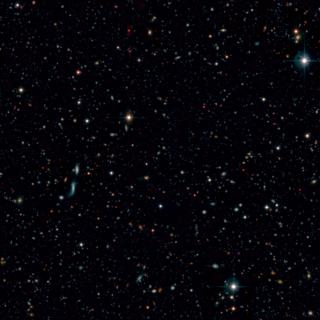Bibcode
Magnelli, B.; Popesso, P.; Berta, S.; Pozzi, F.; Elbaz, D.; Lutz, D.; Dickinson, M.; Altieri, B.; Andreani, P.; Aussel, H.; Béthermin, M.; Bongiovanni, A.; Cepa, J.; Charmandaris, V.; Chary, R.-R.; Cimatti, A.; Daddi, E.; Förster Schreiber, N. M.; Genzel, R.; Gruppioni, C.; Harwit, M.; Hwang, H. S.; Ivison, R. J.; Magdis, G.; Maiolino, R.; Murphy, E.; Nordon, R.; Pannella, M.; Pérez-García, A. M.; Poglitsch, A.; Rosario, D.; Sanchez-Portal, M.; Santini, P.; Scott, D.; Sturm, E.; Tacconi, L. J.; Valtchanov, I.
Bibliographical reference
Astronomy and Astrophysics, Volume 553, id.A132, 22 pp.
Advertised on:
5
2013
Journal
Citations
414
Refereed citations
393
Description
We present results from the deepest Herschel-Photodetector Array Camera
and Spectrometer (PACS) far-infrared blank field extragalactic survey,
obtained by combining observations of the Great Observatories Origins
Deep Survey (GOODS) fields from the PACS Evolutionary Probe (PEP) and
GOODS-Herschel key programmes. We describe data reduction and
theconstruction of images and catalogues. In the deepest parts of the
GOODS-S field, the catalogues reach 3σ depths of 0.9, 0.6 and 1.3
mJy at 70, 100 and 160 μm, respectively, and resolve ~75% of the
cosmic infrared background at 100 μm and 160 μm into individually
detected sources. We use these data to estimate the PACS confusion
noise, to derive the PACS number counts down to unprecedented depths,
and to determine the infrared luminosity function of galaxies down to
LIR = 1011 L⊙ at z ~ 1 and
LIR = 1012 L⊙ at z ~ 2,
respectively. For the infrared luminosity function of galaxies, our deep
Herschel far-infrared observations are fundamental because they provide
more accurate infrared luminosity estimates than those previously
obtained from mid-infrared observations. Maps and source catalogues
(>3σ) are now publicly released. Combined with the large wealth
of multi-wavelength data available for the GOODS fields, these data
provide a powerful new tool for studying galaxy evolution over a broad
range of redshifts.
Based on observations carried out by the Herschel Space Observatory.
Herschel is an ESA space observatory with science instruments provided
by European-led Principal Investigator consortia and with important
participation from NASA.Appendix A is available in electronic form at http://www.aanda.org
Related projects

Evolution of Galaxies
Galaxy evolution is a crucial topic in modern extragalactic astrophysics, linking cosmology to the Local Universe. Their study requires collecting statistically significant samples of galaxies of different luminosities at different distances. It implies the ability to observe faint objects using different techniques, and at different wavelengths
Jorge
Cepa Nogue